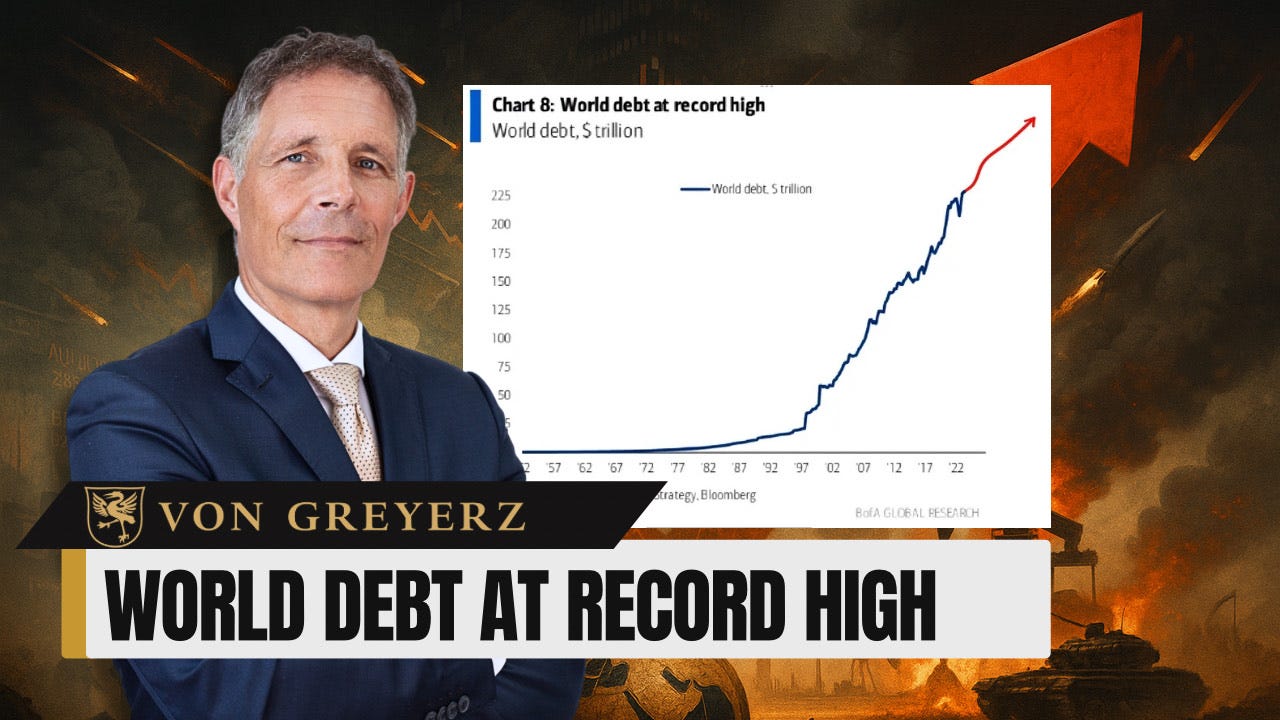Hemingway, though a fiction writer, had a clearer view of economics: debt-driven prosperity always ends in inflation and war.
Matthew Piepenburg offers not just a critique but a warning: An urgent reflection on the accelerating debt crisis, and its inextricable ties to time itself.
In one of the most compelling moments of his address, he underscores:
The difference between a million, a billion, and a trillion seconds—a seemingly simple analogy that exposes the incomprehensible scale of our financial system’s excess.
In this second mention of time, Piepenburg reminds us that debt is not merely an economic term—it’s a temporal one. Debt borrows from the future. And in that sense, time is running out.
Overview of Key Insights
00:00 – Debt as the Central Thread:
Piepenburg begins by stating plainly: debt matters. Whether it's currency, banking, or geopolitical risk, it all emanates from one source—global debt excess.
00:36 – The Time Analogy: Million, Billion, Trillion Seconds:
Using an analogy from John Rubino, he illustrates the astronomical gap between a billion and a trillion. A million seconds ago was weeks ago, a billion seconds ago was 1993, and a trillion seconds ago? 30,000 BC. That’s the scale of current U.S. public debt—$37 trillion.
01:12 – Unsustainable Growth:
U.S. debt now grows by $1 trillion every six months. The current debt-to-GDP ratio surpasses 120%, echoing WWII levels without the unifying crisis of war.
01:44 – The End of Sound Money:
With no gold standard, governments can print “mouse click money” to buy their own unwanted debt. This, Piepenburg warns, is short-term political escapism at the expense of long-term sanity.
02:05 – A Global Sickness:
This isn’t just America’s problem. Global debt has soared from $30 trillion in the late 1990s to over $300 trillion today. Easy money has become a global addiction.
02:34 – Monetary Debasement and M2 Explosion:
U.S. broad money supply (M2) has quintupled in two decades. Instead of growing GDP or tax revenues, governments charge the national credit card and debase their currency.
02:57 – Desperate Solutions and Centralization:
Governments cornered by debt resort to more centralization—digital IDs, CBDCs, and increasingly technocratic controls.
03:17 – Inflation and the Loss of Trust:
As government IOUs lose credibility, central banks step in to monetize debt with fake money. This leads directly to currency debasement and inflation. “All roads lead to inflation,” quotes Piepenburg from Paul Tudor Jones.
03:50 – Bernanke vs. Hemingway:
He jabs at Ben Bernanke’s Nobel Prize, suggesting Hemingway, though a fiction writer, had a clearer view of economics: debt-driven prosperity always ends in inflation and war.
04:46 – War as Distraction and Debt Accelerator:
Ongoing conflicts (Middle East, Ukraine) aren’t just geopolitics—they’re distractions from financial mismanagement. War increases debt, which accelerates monetary debasement.
05:23 – The Case for Gold:
In a world of fake money and manipulated trust, gold endures. Not because it shines, but because it tells the truth. Gold holds purchasing power; fiat money burns it.
05:48 – Final Thought:
Gold is safer, more honest, and more trustworthy than politicians and policy. In a world driven by fiction, gold remains real.















Share this post